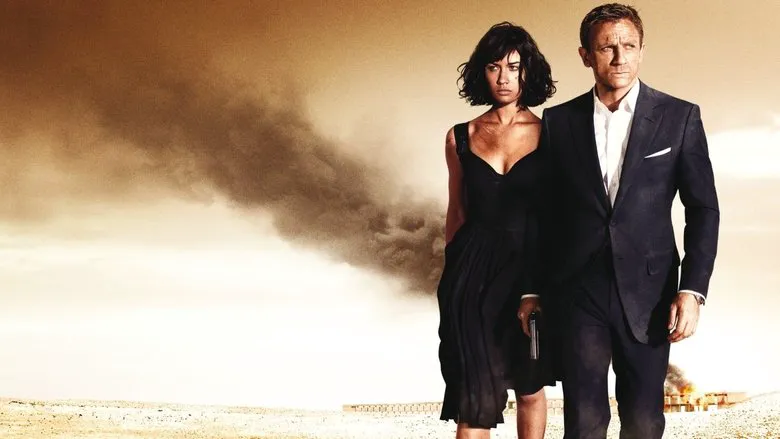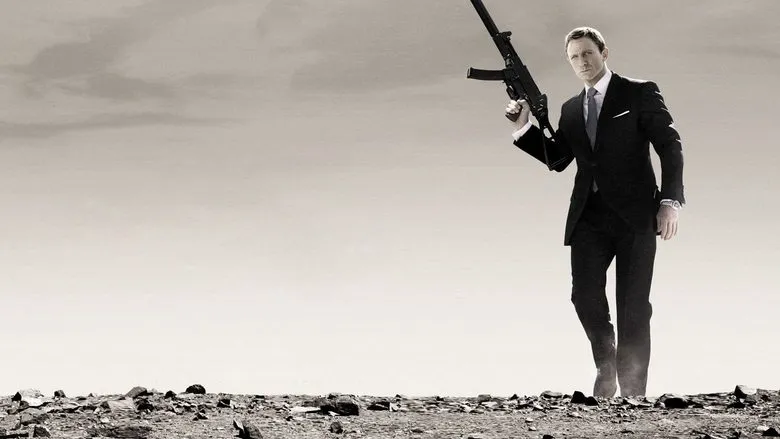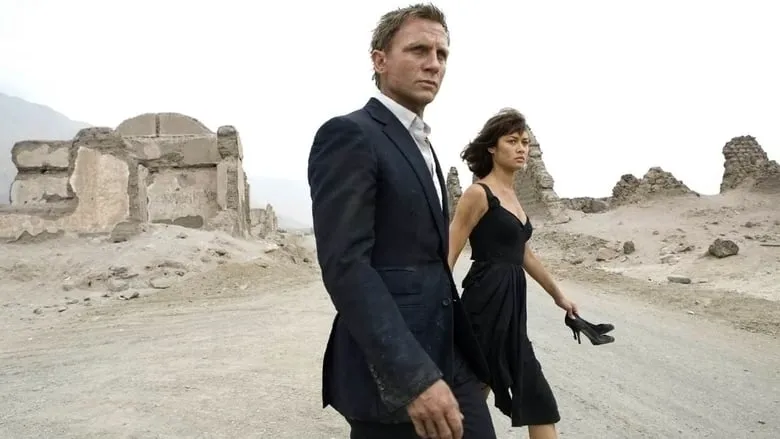Quantum of Solace: A Review
Acknowledging that “Quantum of Solace” is a direct sequel to “Casino Royale” (2006), the filmmakers were honest enough to suggest a re-watch of the previous installment for optimal viewing. This isn’t merely about refreshing your memory of who betrayed whom; it’s about aligning with the internal timeline. For James Bond, only an hour has passed since he shot Mr. White, the man responsible for the death of Vesper Lynd, the only woman Bond ever loved. The furious energy driving the agent with a license to kill fuels “Quantum of Solace,” propelling the action forward at such a relentless pace that you might occasionally need a breather.

A Relentless Pursuit of Revenge
Opening with a ferocious car chase along winding roads, the film transitions into a tense shootout in a clandestine basement. During interrogation, Mr. White brazenly informs Bond and M that his organization has operatives everywhere, a claim immediately validated when a traitorous guard opens fire. Bond’s path of vengeance and duty leads him to Haiti, where he encounters a cast of unsavory characters: Dominic Greene, head of a shadowy organization manipulating governments for lucrative concessions, and a villainous Latin American general aspiring to the presidency. The key to unraveling the conspiracy lies with Camille (Olga Kurylenko), a vengeful woman seeking retribution for the brutal murder of her mother and father, a Bolivian politician, at the hands of the ambitious general. Bond leaves a trail of bodies, hindering the discovery of the conspirators’ true intentions, but ultimately, amidst explosions and fires in the desert, the truth emerges.
The Evolution of Bond
To paraphrase an old joke, Martin Campbell, the director of “Casino Royale,” successfully dragged Bond from the stuffy confines of a tired franchise into the new millennium. The creators then faced a critical question: what to do with the super-agent next? Campbell himself declined to answer, departing the project without clear explanation.

What Makes Bond, Bond?
The question was indeed profound: what defines Bond? What distinguishes Xander Cage from “XXX” from being Bond? Why isn’t Ethan Hunt from “Mission Impossible” Bond? Is it merely the respectable, antiquated atmosphere of the Cold War era, the irony, and the vodka martini? With “Casino Royale,” Campbell achieved a miracle, creating not only one of the best 007 films but also identifying the essence of Bond. Bond isn’t about gadgets and conquests; he’s the point of equilibrium between gritty reality and audacious self-assuredness. It’s the balance between the genuine horror of nuclear catastrophe and Sean Connery’s bow tie. Campbell maintained this balance flawlessly. As Vesper Lynd said after Bond was brutally beaten, “Even if all that was left of you was your smile and your little finger, you’d still be the best man I ever knew.”
A Missed Balance
Marc Forster, an intelligent director known for his thoughtful dramas like “Monster’s Ball,” “Stranger Than Fiction” (2006), and “The Kite Runner,” fails to maintain this balance. On one hand, reality intrudes: mythical villains manipulating governments feel weak in the post-Guantanamo, post-9/11, post-Yugoslavia, and post-Iraq world. On the other hand, style falters: the film lacks quotable lines. There’s a frantic whirlwind of locations and confrontations, excellent set design, a somewhat naive Kurylenko, and a flawless Craig, who, like the world itself, proves insufficient. The franchise’s core idea – humanizing Agent 007, imbuing him with passions, desires, and human appeal – has devolved into a cold-blooded marketing strategy.

Symbolically, the film’s final scene unfolds in the cold and unattractive city of Kazan – Bond returns to his roots.
But this occurs in an era when an African American becomes President of the United States, a Russian owns the British “Chelsea” football club, and India launches a rocket to the moon.